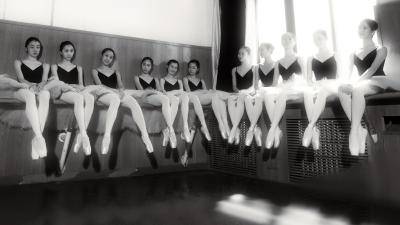An artist in the United States is not unfamiliar with economic strain, and the events of this year have only highlighted and intensified that for many. The “Starving Artist” trope is one that is overplayed and romanticized in our culture; with the general idea passed on to children that the arts are a wonderful thing to consume, but a terrible thing to dedicate one’s life to. There is no economic reward, and only constant sacrifice in order to survive. Arts funding is scarce, and it seems only the big names get it. The idea that an artist should be financially compensated for artistic output is often laughed off with promises to pay in exposure. Although the current economic climate is not friendly, this is a time that artists can assert the benefits of their field--that the arts matter--not just on a cognitive and cultural level, but also on an economic and political level. If we are to become a more equitable society, it is time for a change in the way that the United States views, funds, and supports arts and culture.
The arts in the United States are an economic powerhouse, accounting for roughly four and a half percent of the country’s GDP, and adding four times more to the US Economy than the agricultural sector. To top it off, federal funding for the National Endowment for the Arts (NEA) represents only a tiny fraction (0.004 percent to be exact) of the budget. Yet, in February of this year, when President Donald Trump proposed his budget for the 2021 fiscal year, for the fourth year in a row, he proposed slashing the NEA budget to the bone, with the intent of dissolving the organization completely. The reasoning? Private arts funding is allegedly a better option, and the advent of online platforms, like Kickstarter, have increased the ability for artists to seek out private financing. In their words: “The Administration believes audiences and aficionados are better than the Government at deciding what art is good or important.” This sentiment reflects a long history of American aversion to public funding in arts and culture that has led American artists to use crowdfunding sites and beg for private donations in the first place. The White House believes that if the art is “good enough,” private donors will intercede and save the arts in America. However, the reality is not that simple.
Arts need to be a valued part of the political discussion, not a sideshow.
The unfortunate truth of relying only on private donations is that large swaths of the country will be left behind; private funding is concentrated in large cities, leaving out the many rural communities in the United States. Furthermore, in those large cities, the donations and patronage tends to skew towards the larger, well-established non-profits, leaving the rest of the city’s artists out of the conversation. The NEA was founded by President Lyndon B. Johnson as a part of his vision of The Great Society to help avoid this pitfall. Private funding alone is not the answer, since it turns the artist into a constant hustler for cash, and potentially compromises their artistic integrity in a never-ending quest to nail down lucrative private donors.
This is not to say that the NEA is a panacea for all of this nation’s art funding woes, but it is certainly not an institution that merits dissolution, nor will its destruction result in any net benefit for the taxpayer’s pockets or communities. Perhaps the German model of funding mostly via disbursements from state and city art councils would be a better fit. Germany is a world leader in cultural funding, and does not eschew private funding either. The results have been favorable. Unlike the cultural sway New York and Los Angeles hold in the United States, no one city in Germany possesses dominance. This decentralized model has given rise to a proliferation of diverse theaters, museums, galleries, dance companies and opera houses, opening up more economic opportunities for German artists. There is an additional cultural edge that is unique to Germany: the audiences are a broad cross section of society, rather than the elite patrons typically seen frequenting similar haunts in the United States. Arts in Germany are viewed as a point of local pride and responsibility, and the sheer variety of organizations throughout the country is evidence of this. It is worth noting that while the United States does offer local funding, all the public funding (federal, state, and local) adds up to an investment of four dollars and eighteen cents per capita (with the NEA only accounting for forty-eight cents of that), which is dwarfed by Germany’s average of twenty-five dollars per capita.
Nonetheless, if quarantine in the United States taught us one lesson it would be this: Americans love the arts. What would the months of self-isolation and social distancing have looked like without television shows, movies, music, books, live-streamed and pre-recorded performances? These things are all a product of the arts industry, and certainly worth every penny. So why are artists offered insultingly low-paying contracts, or worse, the dreaded payment in exposure? Simply put, because American culture has reinforced the idea that arts are superfluous, extra, and easy to dismiss. This has given rise to the “Starving Artist” cliche mentioned earlier, which in turn creates a tendency to exploit the passion that artists have for their career. The common attitude is that because the artist works for love of craft, they can be paid a pittance and still do their work out of sheer ardor. This is embedded in general American attitudes toward the arts. Arts are not typically well-funded in schools, a career in any art form is often initially laughed off or even condemned by friends and family, and even artists underpay other artists. If the schools in the United States do not educate children on the many values of the arts, the result is a population of adults who do not understand the inherent necessity for art in a culture, and will therefore be unwilling to give it respect, let alone its full monetary due. That is playing out across the nation right now.
The “Starving Artist” trope is one that is overplayed and romanticized in our culture.
The coronavirus pandemic has offered a unique opportunity for many to step outside their daily lives and examine the constant grind which was deemed as normal to operate on. This is not to trivialize the gut-wrenching hardship that these last months have wrought on the American people, but simply to offer a slightly different perspective for the creatives in this country. Perhaps now is the time to realize that the way things were operating is not the way things have to be. To be sure, there are major cultural and ideological shifts that have to happen in the United States in order for artists to procure more economic security and financial support, but there are steps that can be taken by individuals. First of all, as painful as it can be to turn down work, an offer to pay in exposure should be treated as the joke that it is, and young, vulnerable artists need to learn that immediately, not five years down the road of their career. Secondly, arts need to be a valued part of the political discussion, not a sideshow. As an industry that contributes more economically than the agricultural sector, there is a political power that should be available to wield, and artists should vote and act accordingly. Thirdly, every artist should push their friend and family network to explore and invest in their local arts economy. It is a wonderful experience to see the big name dance companies perform at the large opera houses, but if that is the only dance that Americans are paying to watch, incredible local talent will wither away, unnoticed and underfunded. Finally, artists who are hiring other artists have a deep responsibility to uplift their industry. If they do not financially value the creatives they employ, how can the rest of the country be expected to follow suit?
Many crumbling structures in American society were revealed in the last few troubling months, and the precariousness of an artistic career in today’s economy was no exception. Artists in the United States have a long road ahead of them, battling deep-seated ideological and political philosophies in a quest for social support and recognition of economic viability. The important thing to remember is that things do not always have to be the way they are simply because that is how they have been. The reality is that arts were not always undervalued in this country; a steady erosion has led to the “Starving Artist” culture, but it can be saved, steadied, and reborn. Artists will, as they often do, lead the way.




